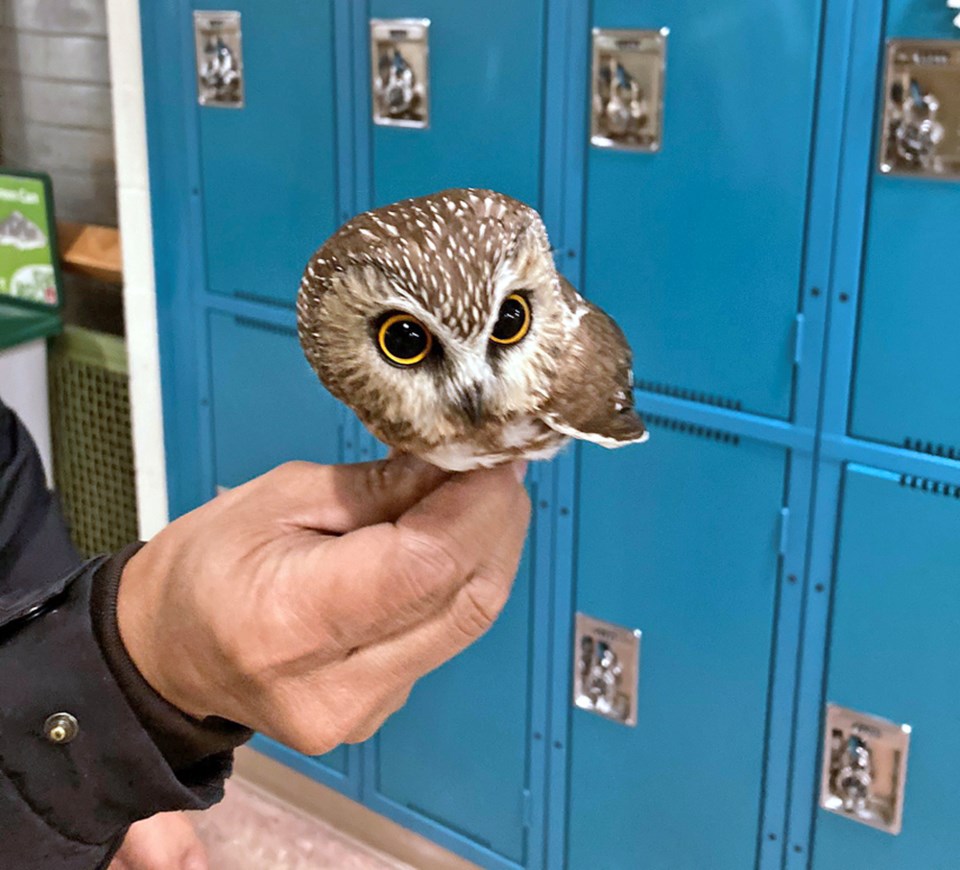A bright-eyed member of one of North America’s smallest owl species found itself among the big kids in a West Vancouver high school Wednesday.
When Rockridge Secondary vice-principal Garth Thomson got to work this morning, Tony Seculles, the school’s head custodian and apparently its resident bird whisperer, beckoned him to the common area where he had been busy tracking a small northern saw-whet owl that had got into the school and perched itself on a high ledge.
“The school’s over in West Van, kind of nestled in the forest, and we do get birds flying in from time to time,” noted Thomson, who said there had been instances of ravens, owls and other birds of prey who have flown in over the years. “I’d never seen an owl that small or that up-close.”
Seculles opened a window for the owl to go on its way, but in its frenzied haste the tiny raptor flew into another closed window, according to Thomson.
Seculles then gently picked up the owl from the ground. Although it appeared stunned, it also seemed to be uninjured, said Thomson. Seculles walked the owl outside and released it back into the wilderness. “The wings were fine and he let it go,” said Thomson.
During the pandemic, Rockridge custodial staff have been starting each day by opening all the doors to the building to get the fresh air flowing, according to Thomson, who said he assumed that was probably how the owl found itself inside in the first place.
“It was a happy ending,” said Thomson.
Frank Doyle, a provincial raptor ecologist and adjunct professor at UBC Okanagan, confirmed from a photo of the raptor that it was a “beautiful northern saw-whet owl.”
Saw-whet owls are known to eat mice and voles and may stay in an area year-round if there is enough food. They are also known to sometimes fly thousands of kilometres to find food, said Doyle.
The northern saw-whet owl species became something of an internet sensation last month after a photo circulated of one that was discovered tucked away in the branches of the giant Christmas tree in New York City’s Rockefeller Center.

